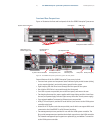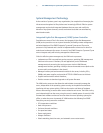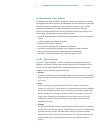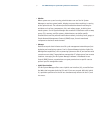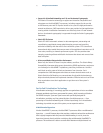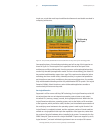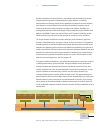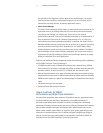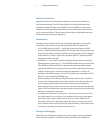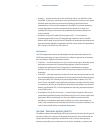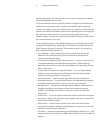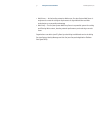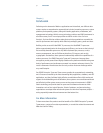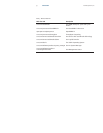32
E
n
t
erpr
i
se-
Cl
ass
S
o
ft
ware Sun Microsystems, Inc.
Solaris
™
Containers
Providing virtualization at the OS level, Solaris Containers consist of a group of
technologies that work together to efficiently manage system resources, virtualize the
environment, and provide a complete, isolated, and secure runtime environment for
applications. Solaris containers include important technologies that work together with
the fair-share scheduler:
• Solaris Zones
The Solaris 10 OS provides a unique partitioning technology called Solaris Zones
that can be used to create an isolated and secure environment for running
applications. A zone is a virtualized operating system environment created within
a single instance of the Solaris OS. Zones can be used to isolate applications and
processes from the rest of the system. This isolation helps enhance security and
reliability since processes in one zone are prevented from interfering with
processes running in another zone.
• Resource Management
Resource management tools provided with the Solaris OS help allocate resources
such as CPUs to specific applications. CPUs in a multiprocessor system (or threads
in the UltraSPARC T2 processor) can be logically partitioned into processor sets
and bound to a resource pool, which in turn can be assigned to a Solaris zone.
Resource pools provide the capability to separate workloads so that consumption
of CPU resources do not overlap, and also provide a persistent configuration
mechanism for processor sets and scheduling class assignment. In addition, the
dynamic features of resource pools enable administrators to adjust system
resources in response to changing workload demands.
Fault Management and Predictive Self Healing
The Solaris 10 OS introduced a new architecture for building and deploying systems and
services capable of fault management and predictive self-healing. Predictive Self
Healing is an innovative capability in the Solaris 10 OS that automatically diagnoses,
isolates, and recovers from many hardware and application faults. As a result, business-
critical applications and essential system services can continue uninterrupted in the
event of software failures, major hardware component failures, and even software mis-
configuration problems.
• Solaris Fault Manager
The Solaris Fault Manager facility collects data relating to hardware and software
errors. This facility automatically and silently detects and diagnoses the
underlying problem, with an extensible set of agents that automatically respond
by taking the faulty component offline. Easy-to-understand diagnostic messages
link to articles in Sun’s knowledge base to clearly guide administrators through
corrective tasks that require human intervention. The open design of the Solaris
Fault Manager facility also permits administrators and field personnel to observe



